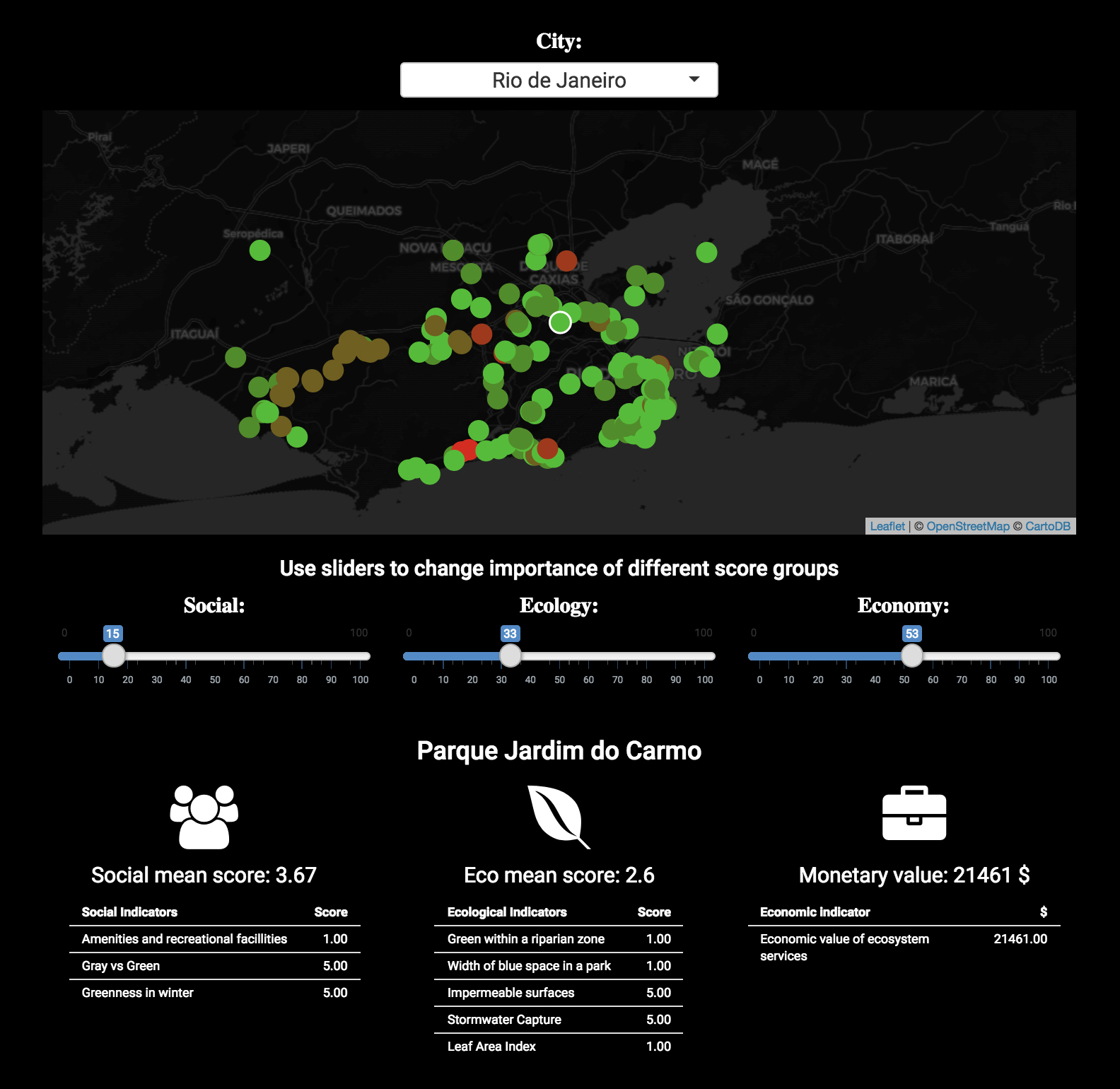Note from DigitalGlobe: We are pleased to announce that the University of Amsterdam, Trinity College Dublin, University College Dublin, EY Netherlands and Xomnia are our overall winners for the GBDX for Sustainability Challenge. Their solution, “Global Green City Watch” is explained in greater detail below. Congratulations to the team for terrific work!
We gave five teams access to our Geospatial Big Data platform (GBDX) and 100 PB imagery library to develop a machine learning solution for one of the United Nations’ Sustainable Development Goals. The teams will have the opportunity to showcase their work at a World Bank-hosted event in Washington, D.C.
The ability to experience nature is paramount to human well-being. Cities are on a mission to green their urban landscapes, especially with over half of the world’s population living in cities. Yet, local governments lack proper tools to efficiently map and assess the amount, condition, and quality of parks, gardens, and other urban green space. As a result, it is difficult to formulate and execute policy goals with precision. Global Green City Watch aims to unlock valuable insights about the quality of urban green space by combining machine learning and image processing algorithms with DigitalGlobe’s high-resolution satellite imagery. In short: we’re monitoring the quality of urban green space, from space. Although urban green space offers social, ecological, and even economic benefits, they rarely get priority in the urban master plan. Especially as cities grow, it is imperative green space grows in parallel. The tension between gray (read: pavement, buildings, infrastructure) and green is as old as the world’s first cities. Global Green City Watch believes an assessment of urban green space based purely on quantity is insufficient. Despite a clear call for greener cities (UN Sustainable Development Goals, UN-Habitat’s New Urban Agenda), our initial research revealed a compelling lack of decision support and monitoring tools to measure existing urban greenery. Interviews with Dutch city officials also showed local government seldom has access to the data necessary to improve the state of their parks. Currently, quality assessments use surveys, checklists, or in-situ observations. This data is quickly outdated, laborious to collect, and lacks a proper, holistic understanding of what quality truly means. Global Green City Watch, once fully developed, could help distill a city’s “park agenda” as effectively as possible, saving cash-strapped municipalities time and money, and improving quality of life for all urban citizens.Geospatial big data for urban green space quality assessments
A comprehensive literature review was conducted to explore the use of geospatial big data to assist in quality assessments of urban green space. The results include a holistic indicator framework called the Urban Green Classification Index. The index, amongst other variables, includes the measuring of water bodies, composition of greenery, riparian (read: riverbank) vegetation, and the quantification and classification of recreational facilities. The indicators are scored from 1 (poor-quality) to 5 (high-quality) with respect to a specific green space. Access to DigitalGlobe’s GBDX platform and 100 PB imagery library enabled this process in an innovative way. With access to the data and OpenStreetMap, Global Green City Watch was able to view, classify and measure previously “invisible” objects, such playgrounds, benches, and riparian vegetation, which are essential for quality assessments. Here, quality is meant in the broadest sense of the word and covers social, ecological, and economic notions of quality. Social quality, for example, includes indicators such as the presence of various amenities and recreational facilities (e.g. benches, monuments, water points, playgrounds, and restaurants). But we also consider the ratio between gray (paved) versus green (unpaved) surfaces and assess the greenness in winter, which has the potential to alleviate seasonal affective disorder. Ecological quality maps the park’s water bodies, plant canopies, vegetation zones, and impermeable surfaces to assess stormwater retention, water infiltration, and temperature regulation. Economic quality provides an estimation of the value provided by a park’s ecosystem services, one more reason for cities to improve the quality of their urban green space. Some cities may face social challenges over ecological issues, and can choose to adjust the weighting of the aforementioned indicators. To test our pilot tool, we selected four preliminary case studies: Amsterdam, Rio de Janeiro, Tokyo, and Houston, and only considered parks greater than two hectares. The chosen cities differ greatly with respect to political, social, and environmental pressures and are subject to such pressures across both hemispheres. Our aim is to validate the methodology for assessing the quality of green space, mainly to ensure it can be utilized and upscaled across varying landscapes. In the figure showing the dashboard below, Rio de Janeiro has been selected. After adjusting the sliders, green, red, and orange circles will appear on the map, representing Rio’s urban green spaces. The green circles indicate a high-scoring park, the orange show medium-scoring parks, and the red pinpoints parks that require quality improvements. Once a circle is clicked, the scorecard for that specific park will be displayed. Anyone can test our tool at globalgreencitywatch.org.